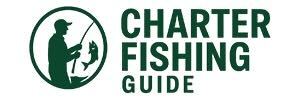Hooked on the Hunt: Lobstering and Spearfishing Off Key West
A hands-on charter that teaches you to harvest responsibly while sharing the Keys' marine culture
Dawn comes soft and tepid in Key West, the harbor a sheet of pewter that the sun is only beginning to kiss. You step onto the skiff and the smell of salt, bait, and diesel fills the air, a raw promise of what the day will deliver. The captain gives the engine a practiced thrum and points toward a low ribbon of reef on the horizon. Out here, the ocean is a character with moods: some mornings it cajoles you with glassy stillness, other days it dares you with current and chop. Either way, it asks for respect.
Trail Wisdom
Bring a Dive Flag
Always use a surface float and dive flag when freediving or snorkeling to alert nearby boats and protect your group.
Hydrate and Snack
Salt, sun, and exertion add up—bring electrolyte drinks and easily eaten snacks to keep energy high.
Check Certification
If you plan to add scuba, bring proof of certification—tanks are often available for rent but certification is required.
Use Reef-Safe Sunscreen
Choose mineral sunscreens and avoid lotions that harm coral to reduce your environmental impact.
Local Knowledge
Hidden Gems
- •Stock Island mangrove channels for calm backcountry snorkeling
- •Shallow sand flats near the Lower Keys ideal for spotting roaming lobsters and rays
Wildlife
Spiny lobster, Green sea turtle
Conservation Note
Responsible operators follow bag limits, avoid coral contact, and encourage reef-safe products; supporting these charters promotes sustainable local fisheries.
Key West developed as a maritime hub with fishing, sponge diving, and wreck salvaging that shaped its seafood culture and boatbuilding traditions.
Seasonal Guide
spring
Best for: Mild temperatures, Calmer seas for flats fishing
Challenges: Variable visibility, Shorter lobster season window ends March 31
Spring brings comfortable air temps and reasonable water temperatures, but lobster season closes March 31 so check regulations before booking.
summer
Best for: Peak lobster season (starts Aug 6), Warm water and good visibility
Challenges: Heat and humidity, Hurricane season risk
Summer starts lobster season and offers warm water ideal for snorkeling, but be mindful of afternoon storms and hurricane season advisories.
fall
Best for: Stable water after summer storms, Excellent visibility for freediving
Challenges: Hurricane season into November, Occasional strong currents
Early fall often delivers clear water and steady conditions, making it a sweet spot for both lobstering and spearfishing when weather cooperates.
winter
Best for: Calmer seas on many days, Less crowded charters
Challenges: Cooler water temperatures, Shorter daylight hours
Winter offers quieter waterways and good fishing; bring a wetsuit layer for comfort on dives during cooler spells.
Photographer's Notes
What to Bring
Mask and SnorkelEssential
A well-fitting mask and snorkel improve visibility and comfort during freediving searches.
Mesh Gear BagEssential
A mesh bag keeps harvested lobster, fins, and wet gear ventilated and easy to stow.
Light Wetsuit or Rashguard
A thin wetsuit or thermal layer increases bottom time during cooler months and protects from abrasion.
Reef-Safe SunscreenEssential
Protects your skin while minimizing chemical impact on coral and marine life.
Common Questions
Do I need a fishing license to lobstering with a charter?
Regulations vary; many charters handle permits for guests but you should check with the operator—Florida requires a saltwater fishing license for most adults and specific lobster rules apply.
Is scuba required to lobstering?
No; freediving and snorkeling are common. Scuba can be an add-on but typically requires a diving certification and advance notice.
What is the lobster season in Florida?
Florida spiny lobster season runs from August 6 through March 31; regulations such as size limits and bag limits are enforced by state authorities.
Are spearfishing targets restricted?
Yes; protected species and size limits apply. Operators will brief you on legal targets and ethical shot selection.
How many people are on a typical charter?
Many charters run small groups—this trip accommodates up to six people, making for a hands-on, educational experience.
What are the weather-related cancellation policies?
Most operators monitor forecasts and may reschedule or refund if conditions are unsafe; check the specific charter's policy before booking.
What to Pack
Mask/snorkel/fins for comfort; reef-safe sunscreen to protect coral; snacks and water for energy; towel and dry change of clothes for after the trip
Did You Know
The Florida Keys Reef Tract is the third-largest barrier reef system in the world, stretching more than 220 miles from the Dry Tortugas to the Everglades.
Quick Travel Tips
Book early for weekend slots; confirm scuba certification ahead of time; bring cash or card for dock fees or gratuities; expect limited cell service once offshore
Local Flavor
After the water, head to Key West Harbor for fresh seafood at Schooner Wharf or Conch Republic Seafood Company, sip a Cuban coffee, and cap the day with sunset at Mallory Square and a cold local beer.
Logistics Snapshot
Closest airport: Key West International Airport (EYW) / Typical marina pickup in Key West (10–20 minute drive from town center) / Cell service: patchy offshore; plan communications via operator / Permits: operator often covers harvesting rules but check state saltwater fishing license requirements
Sustainability Note
This region's reefs are fragile—use reef-safe sunscreen, follow bag limits, avoid touching coral, and choose operators who practice and promote sustainable harvesting.
Continue Reading

Four Hours at Sea: Hooking the Big Game off Puerto Plata
A compact, private half-day charter off Puerto Plata pairs fast runs to deep water with experienced crews and a practiced catch-and-release ethic — everything you need for an efficient adrenaline hit on the Atlantic.
Puerto Plata, Puerto Plata

Hooked on Lombok: A Six-Hour Deep-Sea Fishing Escape from Kuta
A private half-day charter out of Kuta, Lombok delivers concentrated offshore fishing—tuna, trevally, sun, and salt—guided by local captains who read currents like maps. Here’s what to expect and how to prepare for a productive six-hour expedition.
Kuta, West Nusa Tenggara

